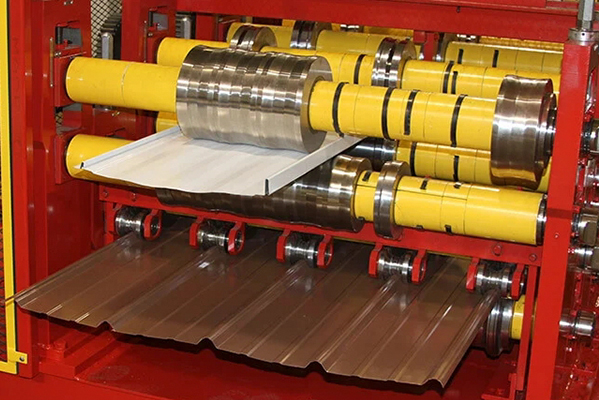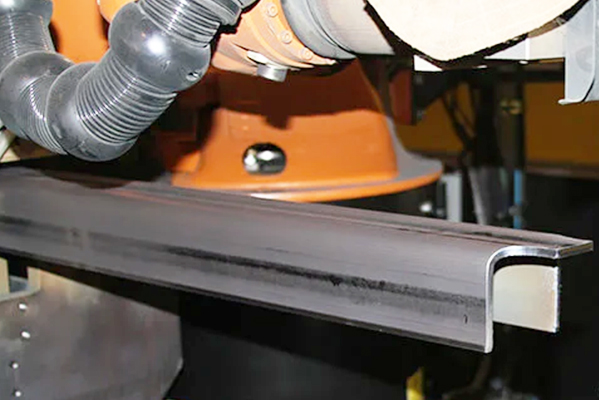Navigation Menu
Contact Us
- Email:
- info@wxavatar.com
- Address:
- Yurong Village, Yuqi Street, Huishan District, Wuxi, China.
Release Date:Apr 29, 2025 Visit:46 Source:Roll Forming Machine Factory
Rolling is one of the most important metal forming processes used in manufacturing industries worldwide. This mechanical process involves passing metal stock through one or more pairs of rolls to reduce thickness, create uniform thickness, or impart desired mechanical properties. The rolling principle has been employed for centuries, evolving from simple manual mills to today's highly automated continuous rolling systems.

Fundamental Mechanics of Rolling
At its core, the rolling process relies on compressive forces applied through rotating rolls to plastically deform metal. When metal passes between two rolls rotating in opposite directions, the material experiences compression between the roll surfaces. This compression causes the metal to elongate while reducing its cross-sectional area. The amount of deformation depends on several factors including roll diameter, friction conditions, temperature, and material properties.
The basic mechanical principle follows the volume constancy rule - as thickness decreases, length increases proportionally to maintain constant volume. The rolls act as tools that transmit force to the workpiece while controlling its final dimensions and surface quality.
Key Components of a Rolling System
A typical rolling system consists of several essential components:
Work Rolls: These are the primary rolls that directly contact and deform the metal. They are typically made of hardened steel or tungsten carbide for durability.
Backup Rolls: In many mill designs, larger diameter backup rolls support the work rolls to prevent bending under high rolling forces.
Roll Housing: The rigid frame that contains and supports all rolling components while withstanding tremendous forces.
Drive System: Motors, gearboxes, and spindles that provide power to rotate the rolls at controlled speeds.
Control Systems: Modern mills incorporate sophisticated control systems for thickness, shape, and tension regulation.
Types of Rolling Processes
Various rolling methods have been developed to meet different industrial needs:
Hot Rolling: Performed above the metal's recrystallization temperature, allowing for significant deformation with less force. Commonly used for initial breakdown of ingots and slabs.
Cold Rolling: Conducted at room temperature, producing products with tighter tolerances, better surface finishes, and increased strength through work hardening.
Flat Rolling: The most common type, producing flat products like sheets, strips, and plates.
Shape Rolling: Used to produce long products with specific cross-sections such as beams, rails, and rods.
Ring Rolling: Specialized process for creating seamless rings by gradually reducing wall thickness while increasing diameter.
Material Behavior During Rolling
Understanding material response is crucial for effective rolling:
Plastic Deformation: Metals deform plastically when stresses exceed their yield strength, allowing permanent shape change.
Strain Hardening: Cold working increases dislocation density, raising strength while reducing ductility.
Recovery and Recrystallization: Hot rolling allows dynamic restoration processes that maintain workability.
Texture Development: Rolling can create preferred grain orientations that influence material properties.
Process Parameters and Their Effects
Several key parameters determine rolling outcomes:
Reduction Percentage: The relative decrease in thickness per pass, typically ranging from 10-50%.
Roll Diameter: Larger rolls can achieve greater reductions but require more power.
Roll Speed: Affects production rate and temperature conditions during rolling.
Friction Conditions: Influences bite angle and power requirements.
Temperature: Critical for hot rolling processes to maintain proper workability.
Quality Considerations in Rolling
Modern rolling processes emphasize consistent product quality through:
Dimensional Accuracy: Precise control of thickness, width, and flatness.
Surface Quality: Minimizing defects like scale, scratches, or roll marks.
Mechanical Properties: Achieving desired strength, hardness, and formability characteristics.
Microstructure Control: Ensuring appropriate grain size and phase distribution.
Technological Advancements in Rolling
Recent developments have enhanced rolling capabilities:
Computer Control Systems: Enable precise regulation of process parameters for improved consistency.
Advanced Sensors: Provide real-time monitoring of product dimensions and properties.
Automation: Reduces human intervention while increasing productivity and safety.
Simulation Tools: Allow virtual testing and optimization of rolling schedules.
Applications of Rolled Products
Rolled metals serve numerous industries:
Construction: Structural shapes, reinforcing bars, and roofing materials.
Transportation: Automotive body panels, aircraft skins, and rail components.
Packaging: Thin gauge foils and containers.
Appliances: Housing components and internal parts.

Conclusion
The rolling process remains a cornerstone of metal manufacturing due to its efficiency, versatility, and ability to produce high-quality products. By understanding the fundamental principles of plastic deformation, force requirements, and material behavior, engineers continue to refine rolling technologies to meet evolving industrial demands. The process's adaptability to different materials, product forms, and quality requirements ensures its continued importance in modern manufacturing.